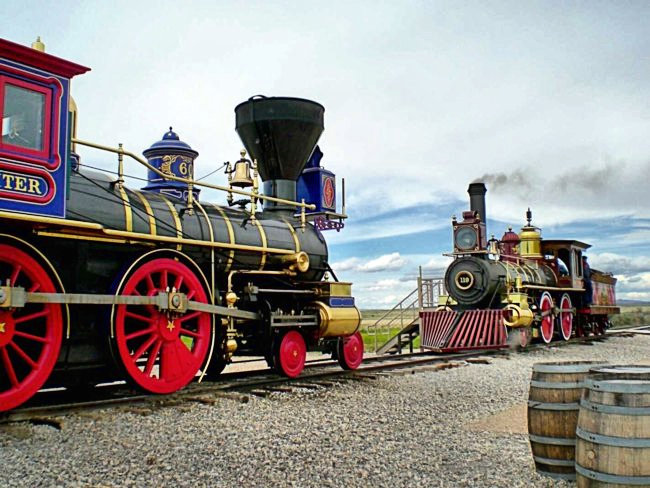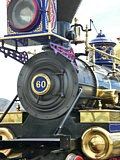|
Scenic USA - Utah Golden Spike National Historic Site |

| Photos by Chris Henn |
America's 19th century was marked with nationwide changes, including territorial expansion west of the Mississippi River, the devastating Civil War, sweeping industrialization advances and the completion of the nation's Transcontinental Railway.
The Golden Spike National Historic Site, at Promontory Point, Utah,  is the area were the Union Pacific and Central Pacific lines were joined to form the first railway to connect the east and west coasts. The two railways were constructed by Central and Union Pacific railroad corporations, both receiving huge land grants and generous government loans for the project.
is the area were the Union Pacific and Central Pacific lines were joined to form the first railway to connect the east and west coasts. The two railways were constructed by Central and Union Pacific railroad corporations, both receiving huge land grants and generous government loans for the project.
Celebrating its 150 year anniversary, these two brightly colored replica locomotives depict the meeting of the railroads and the Last Spike ceremony held on May 10, 1869. In addition to these locomotives, the Jupiter and Number 119, the Golden Spike Historic Site has preserved original railroad bed-rock cuts, wooden trestles, abutments and culverts. The site also preserves the human element of the Transcontinental Railway. Most of the construction was done by hand, and a big part of the history here at Promontory Point was the labor force. While the railroads employed thousands of workers with a variety of ethnic backgrounds, it was the Chinese workers that stood out. Numbering over 11,000 by the end of the project, the Chinese worked 10-12 hour shifts, and endured six days a week of hard labor. Suffering discrimination and lower wages than other workers, the Chinese proved so effective that they were actively recruited. While some returned to China after the project, most stayed in the United States and started a new life for themselves.
Those expecting to see one of the actual ceremonial spikes or the laurel wood tie here at the historic site may be disappointed. Part of a rare art collection, David Hewes donated one of the ceremonial spikes to the Stanford University Art Museum in Palo Alto, California in 1892. The whereabouts of the second gold spike remains unknown. The tie and spike may have fallen victim to the San Francisco earthquake and fire in 1906.
Area Map
Directions- NPS

|
More Area Attractions |
|
Copyright © 2023 Benjamin Prepelka
All Rights Reserved
